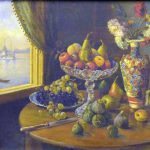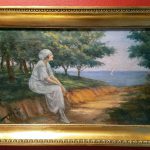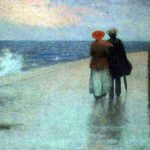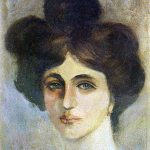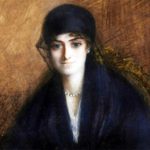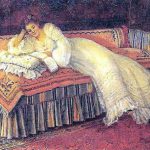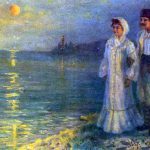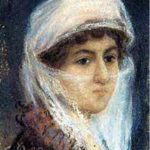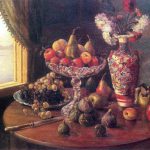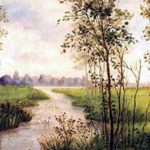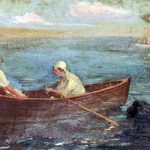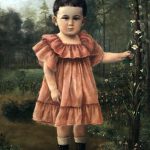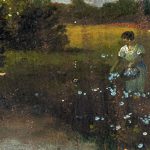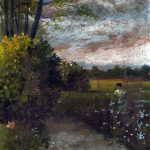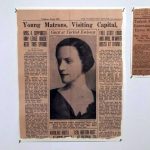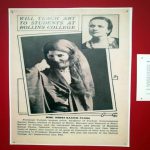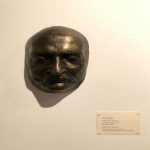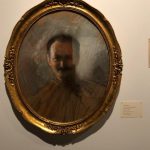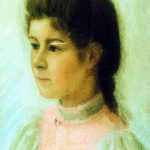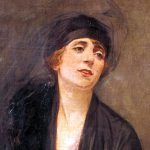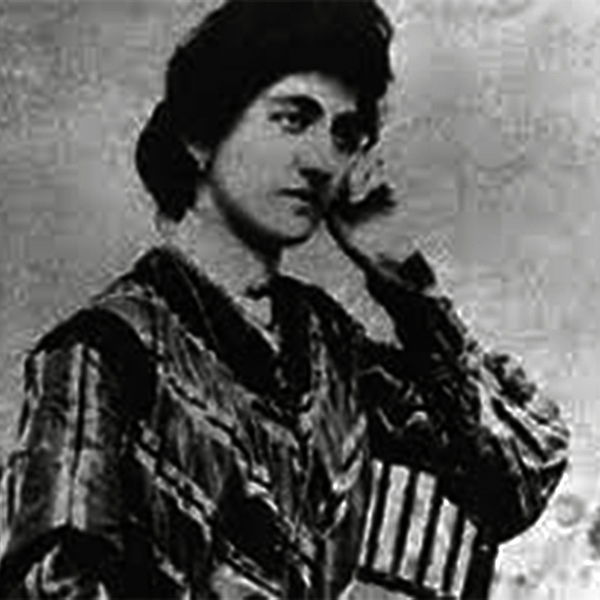
Who is Müfide Kadri? (1890-1912)
Müfide Kadri, one of the first Turkish female painters, is also the first known professional Muslim female art teacher of the Ottoman Empire. She won a gold medal at an exhibition in Munich and became the first female artist of the Ottoman Empire to have her painting included in an exhibition abroad and to win an award.
The artist, who was involved in music when he was not painting, composed compositions. His composition called “Tenan-i Şebap”, whose lyrics belong to Selahattin Bey, is his most successful work in the field of music.
He was born in Istanbul in 1890. He lost his mother right after his birth and his father at a young age. She was adopted by Kadri Bey, one of the judges of the city. Müfide’s mother was the foster sister of Kadri Bey’s wife. A year after the childless couple adopted Müfide, Kadri Bey’s wife also died. Kadri Bey, who made a second marriage, had no children from this marriage, and Müfide grew up as an only child in Kadri Bey’s house in Çamlıca. He was educated by taking lessons from private teachers who came to his home; She never attended school. Not just painting; His talent for all fine arts was discovered. Müfide Kadri, who started painting at the age of ten; She took private lessons from Osman Hamdi Bey. Italian artist Salvatore Valeri, who worked at the Academy of Fine Arts, also gave him charcoal and watercolor lessons. Müfide, who also has musical talent, learned to play instruments such as piano, violin and oud.
His paintings, which he sent to Munich to take part in an exhibition with the encouragement of Hamdi Bey, won him a gold medal. This medal motivated him and he clung to the picture with all his heart. She produced works mostly in the field of portraits and figures.
Müfide Kadri, who turned 21 in 1911, exhibited three oil paintings and one pastel painting in an exhibition opened in Beyoğlu, in one of the halls that belonged to an Italian society at that time (Istanbul Opera Society Hall). Following this, one of Kadri's paintings was sent to the Munich Exhibition by Painter Valöry, and this work won a medal.
In addition to his portraits, the artist also worked on still life and landscape subjects. As a result, it is said that his work "Still Life" in the Izmir Painting and Sculpture Museum has an academic narrative. In Kadri's first works, influences from 19th century French painting can be seen. It is also thought that he practiced his art based on paintings inspired by Barbizon painters and Corot. These works are generally seen as works created by the artist's skills in painting technique and material use. In addition, Müfide Kadri, like Mihri Müşfik Hanım, is one of the artists who is a member of the Ottoman Painters Society and regularly participates in the exhibitions organized by the society.
At a young age, she worked as an art and music teacher at Dersaadet İnas High School, now known as Istanbul Girls' High School. According to Taha Toros, Müfide Kadri, who was the "first female art teacher", was first appointed as a teacher to Numune Schools and then to the girls' school called Nümune-i İnas in Süleymaniye. She taught painting, embroidery and music at İnas Junior High School and İnas High School. He gave painting lessons to Adile Sultan, the daughter of Abdulhamid II, in the palace.
Müfide Kadri, who composed music when she was not painting, had her composition called "Tenan-i Şebap", whose lyrics belonged to Selahattin Bey, and was published in the art magazines of her time.
It is rumored that the young artist caught tuberculosis and that he painted without paying attention to the negative effects of paint on tuberculosis. Müfide Kadri died in Istanbul in 1912, unable to recover from the disease she caught. His body was buried in Karacaahmet Cemetery. The Ottoman Painters Society had his grave built and decorated his gravestone with a palette. This inscription is the work of Tuğrakeş İsmail Hakkı.
About forty of Müfide Kadri's works were given to the Naval Society by her family friends to be exhibited and sold, and the income from the works exhibited in 1912 was donated to the society. Shortly after Müfide Kadri's death, her father Kadri Bey went to Hejaz and settled in Mecca and died there; His wife, who returned after the occupation of the Hejaz by the British, lost her eyesight and ended her life in misery.
The painter has two works in the Istanbul Painting and Sculpture Museum. One of them is a romantic painting called "Love on the Beach", which he painted in 1907. The other is the 13-year-old portrait of the well-known female painter Güzin Duran, who later became one of the first students of the Academy of Fine Arts.
Müfide Kadri's life inspired Halide Edip Adıvar's novel, Son Eseri, published in Tanin newspaper in 1913. The author dedicated the work to Müfide Kadri.

